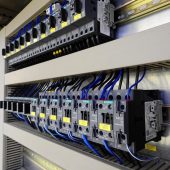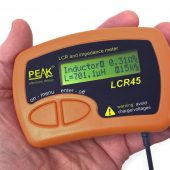An electronic ballast is usually found in discharge lamps, mostly fluorescent lights. It provides the high voltage required to kickstart current flow in the lamp.
An electronic ballast also controls the frequency of power supply to the bulb, which eliminates the flickering that occurs in older fluorescent lamps using a magnetic ballast.
If your fluorescent tube starts to misbehave – flickers, buzzing noise, dim light – or the light goes off completely, it could be a problem with the ballast.
If you have a digital multimeter, you can quickly diagnose the ballast to determine whether it’s the source of the problem. Here’s how to go about it, i.e. how to test an electronic ballast with a digital multimeter.
Identify the Type of Light
Now, not all bulbs and lamps have ballast. LEDs, incandescent, and halogen bulbs do not use electronic ballast. If you have one of these lights and it’s faulty, replace it with a new one.
Fluorescent lights are the ones that have ballast. However, CFLs or compact fluorescent lamps, usually have an internal ballast integrated into the base of the bulb. You cannot replace the ballast, so the only option is to get a new lamp.
This guide applies only if you have fluorescent lights that use an external electronic ballast. These mostly include T5, T8 and T12 light tubes.
An external ballast is easy to access for testing. If it’s faulty, you just replace it.
Tip: Before you go to the trouble of testing the ballast, we recommend checking if the lamps are the problem. Put in a working tube and see if it has the same issues as the old tube. If it does, you can go ahead and test the electronic ballast.
Remove the Ballast
Turn off power to the lamp in the breaker panel. Remove the lens cover from the lamp, if there’s one, then detach the fluorescent tube (or tubes).
This gives you access to the ballast cover. You may need to loosen screws to remove the cover.
Once you expose the ballast, you’ll immediately notice if it has a problem. A damaged electronic ballast may appear swollen or has burn marks. If this is the case with your ballast, don’t even bother testing it; just get a new one.
If the electric ballast appears fine, test it with the digital multimeter to make sure there isn’t an internal problem.
Note: If you notice an oil leak, it means you have the older magnetic ballast. It’s also an indication you need a new ballast.
Testing the Ballast
Set your digital multimeter to the lowest ohm setting. Then, take the black lead from your multimeter and touch it to the connector holding the white wires (neutral).
Then touch the red lead to all the other coloured wires, one at a time. Some ballasts have red, blue and yellow wires, while others have just red and blue wires.
Each time you touch the red lead to one of the coloured wires, check the reading on the display. Depending on your digital multimeter, the display might show 1 or OL, meaning open line. This means the ballast is in good working condition.
If you touch the red lead to one of the wires and get a reading on the display that’s not 1 or OL, it means the ballast is faulty and you’ll need to buy a new one.
Causes of Electronic Ballast Malfunction
Heat and moisture are the most common causes of a faulty electronic ballast. That’s why it’s important to get an electronic ballast that’s rated to withstand the highest and lowest temperatures you experience in your area.
Moisture can occur from condensation or a leaky ceiling. If it is condensation, get a ballast that has better moisture protection. If the problem is your ceiling, fix the leak before installing a new electronic ballast.


